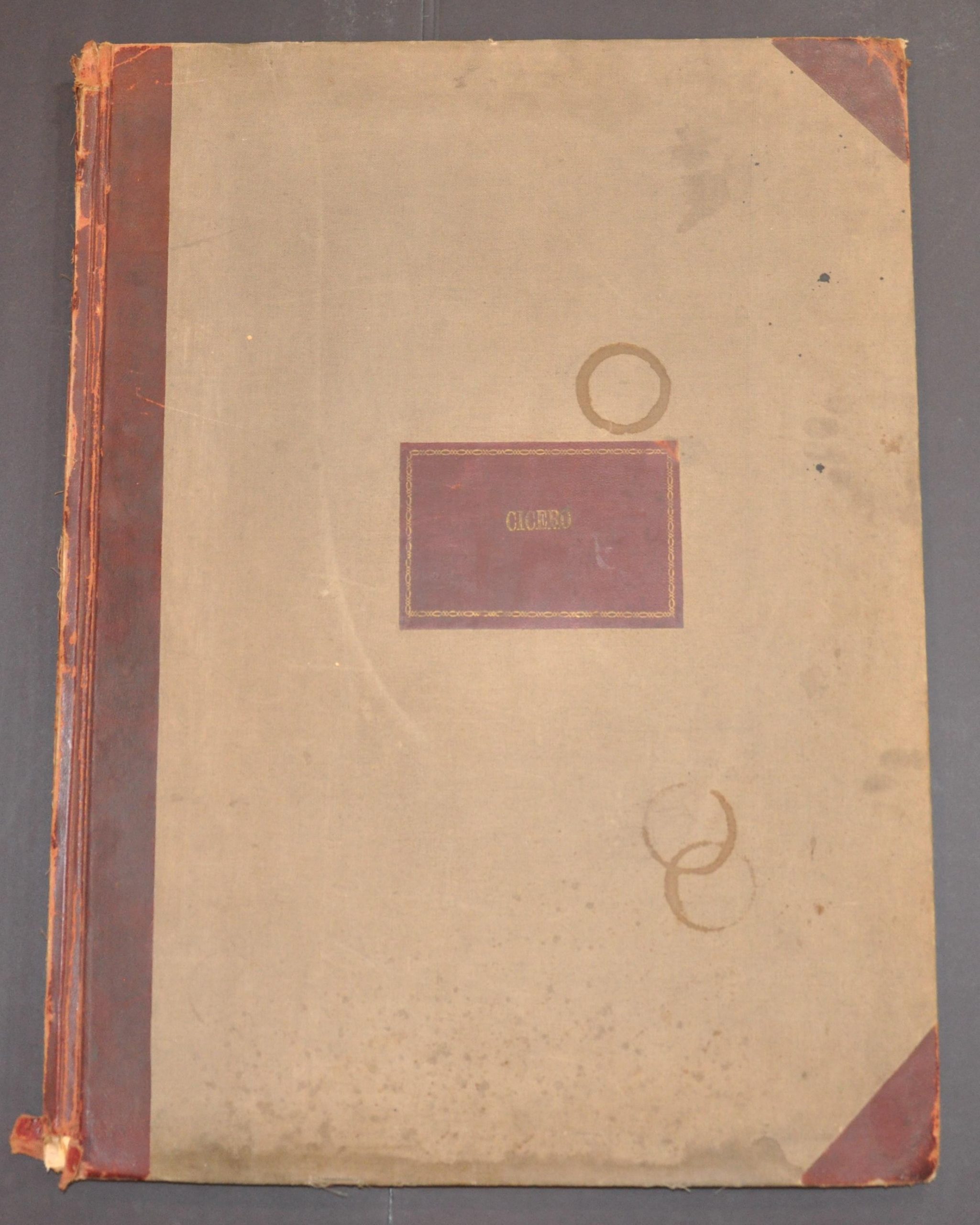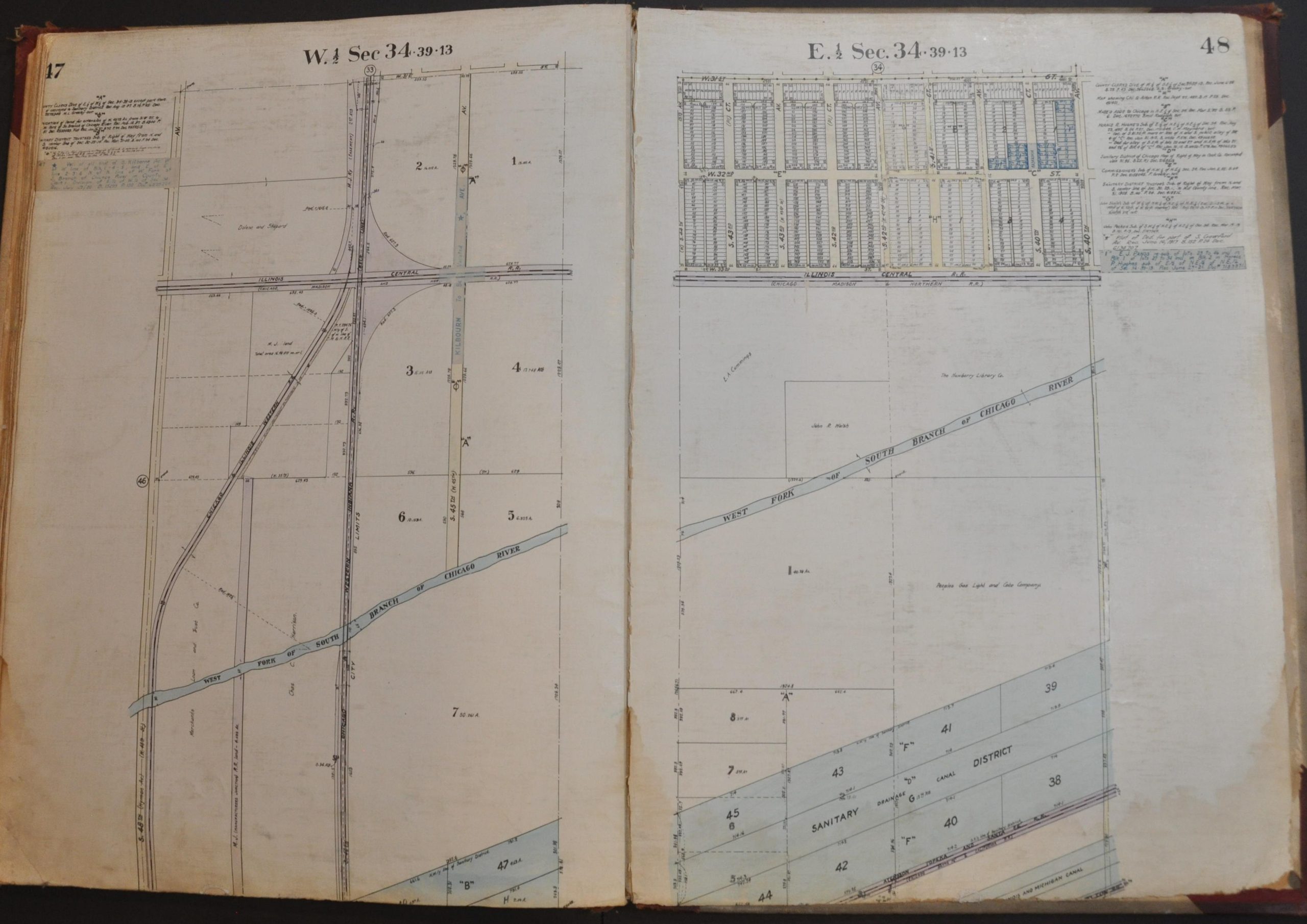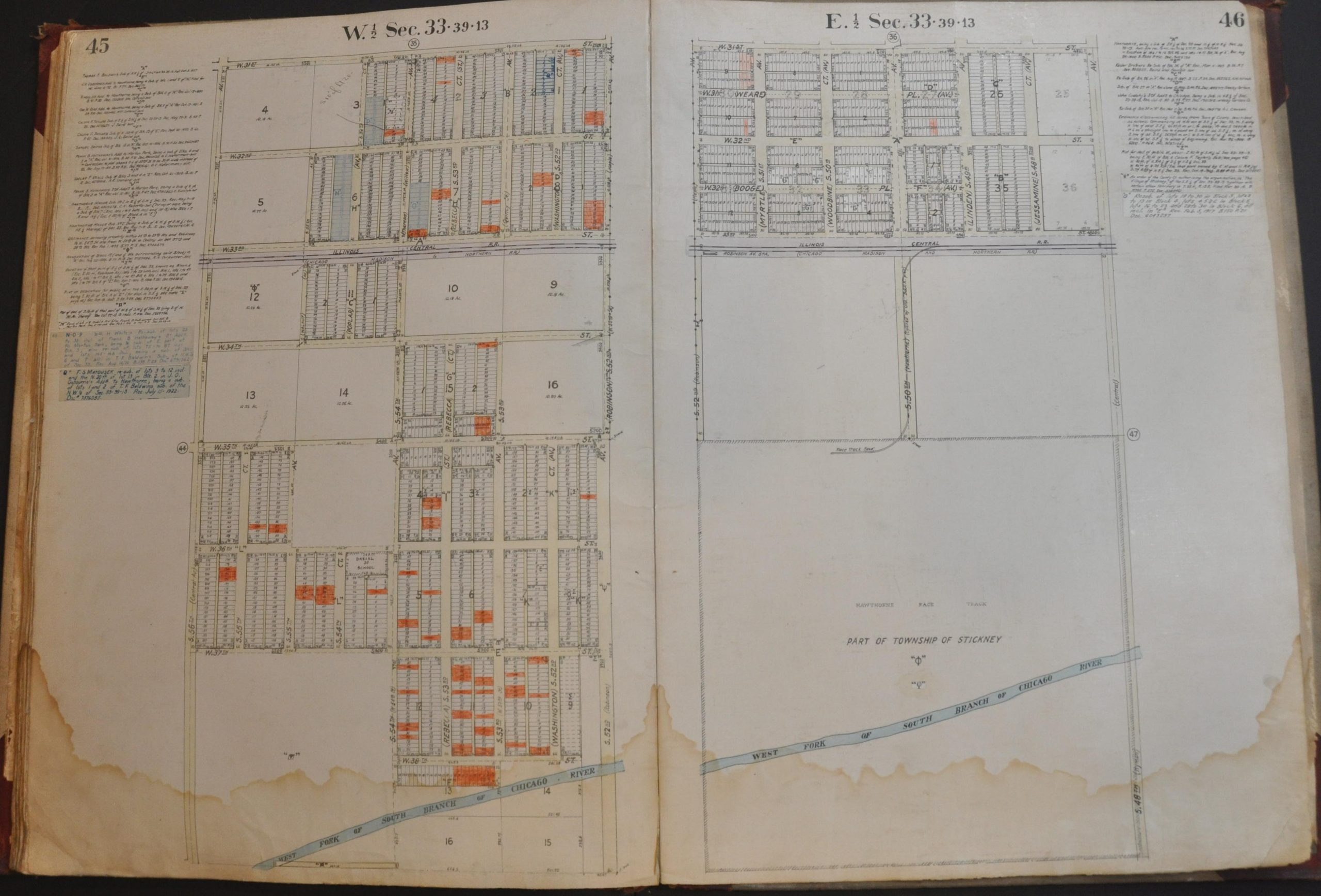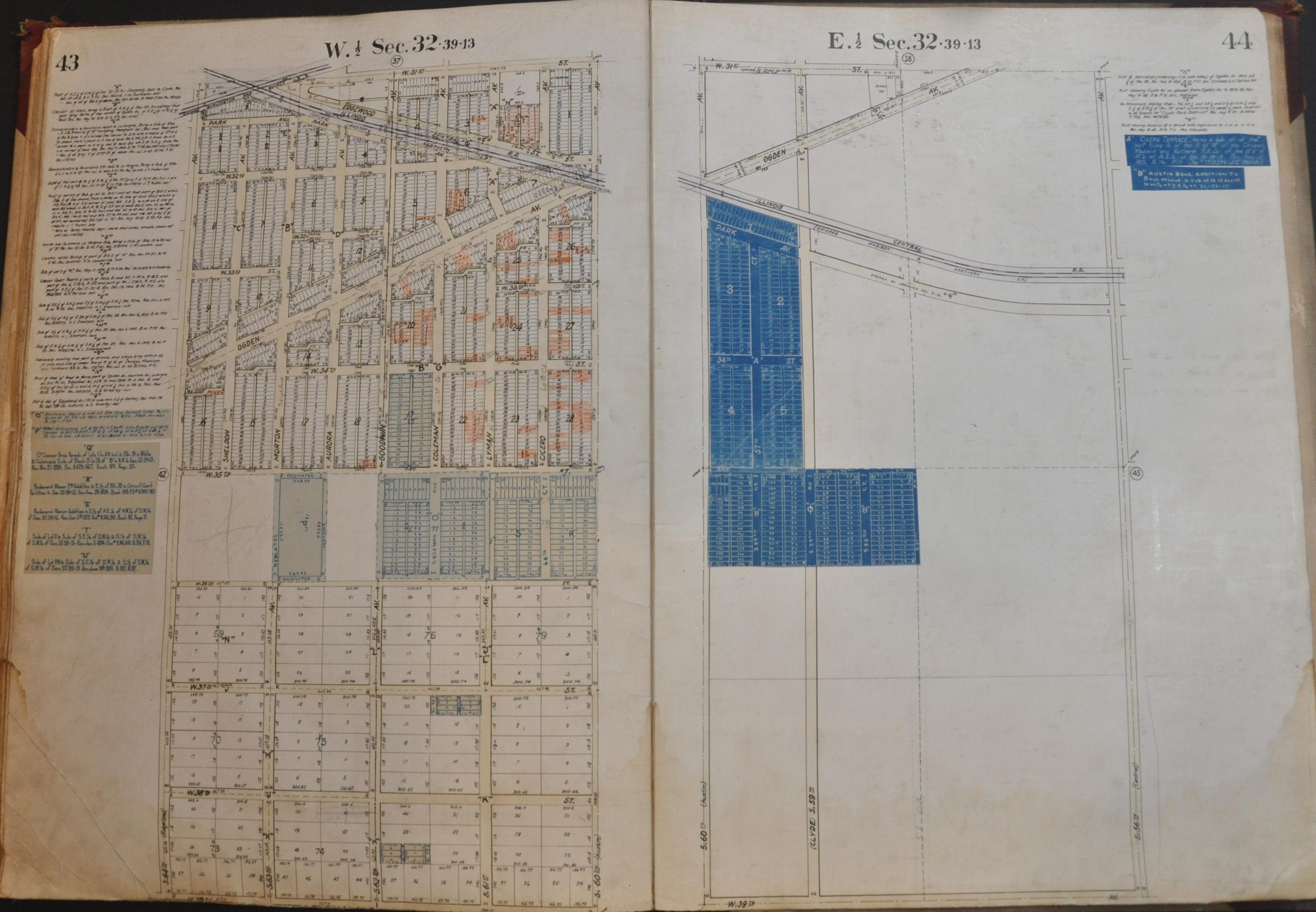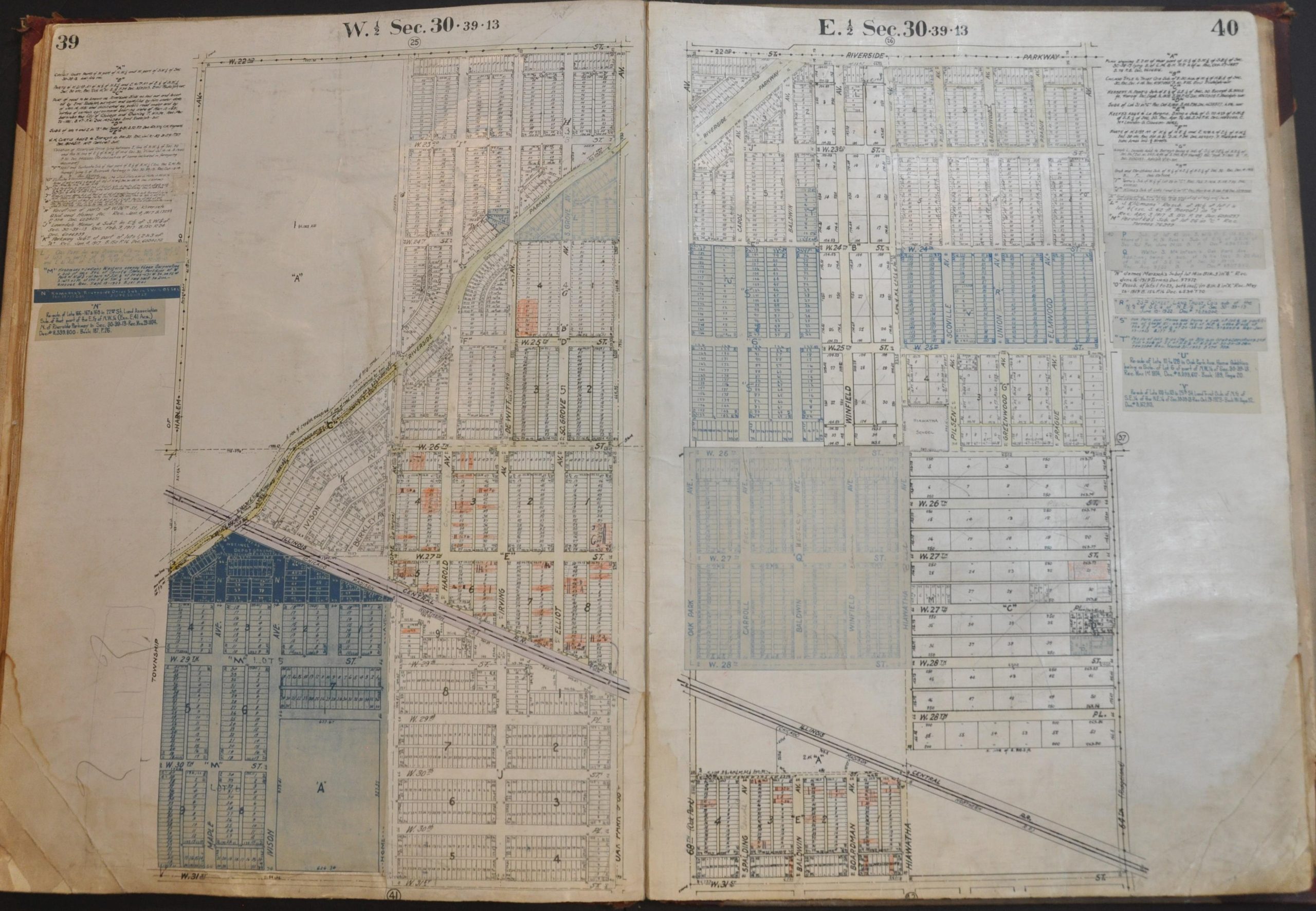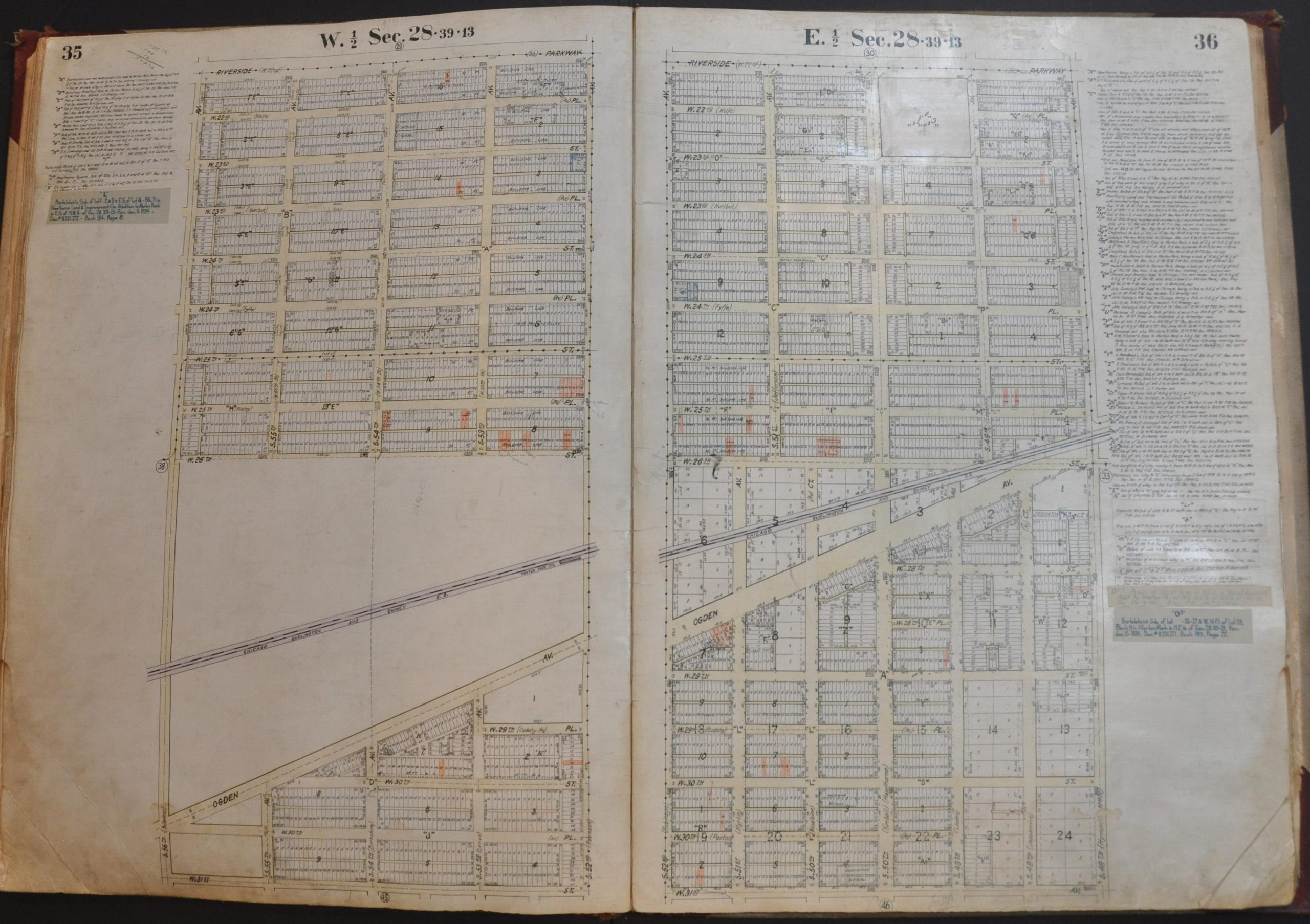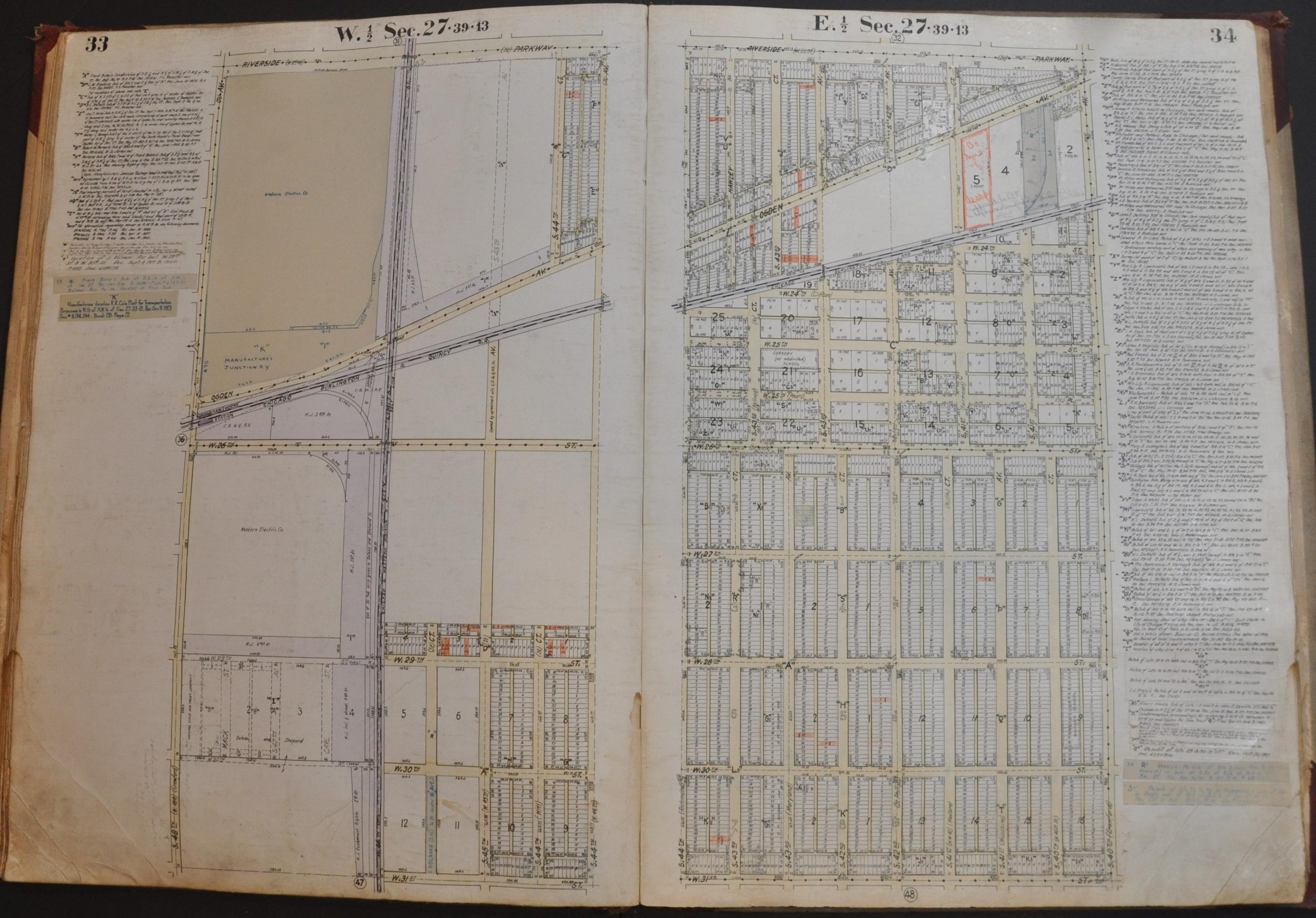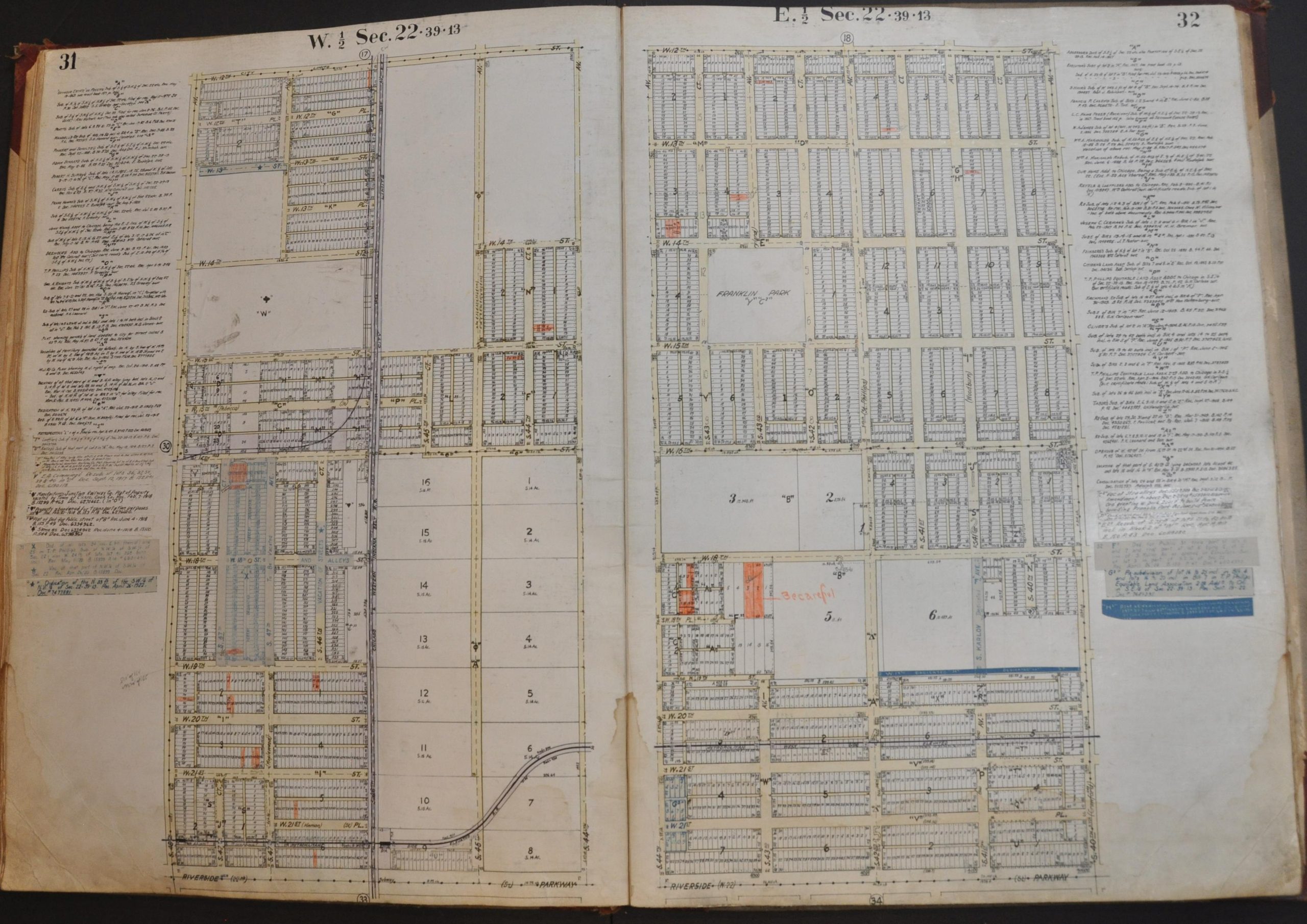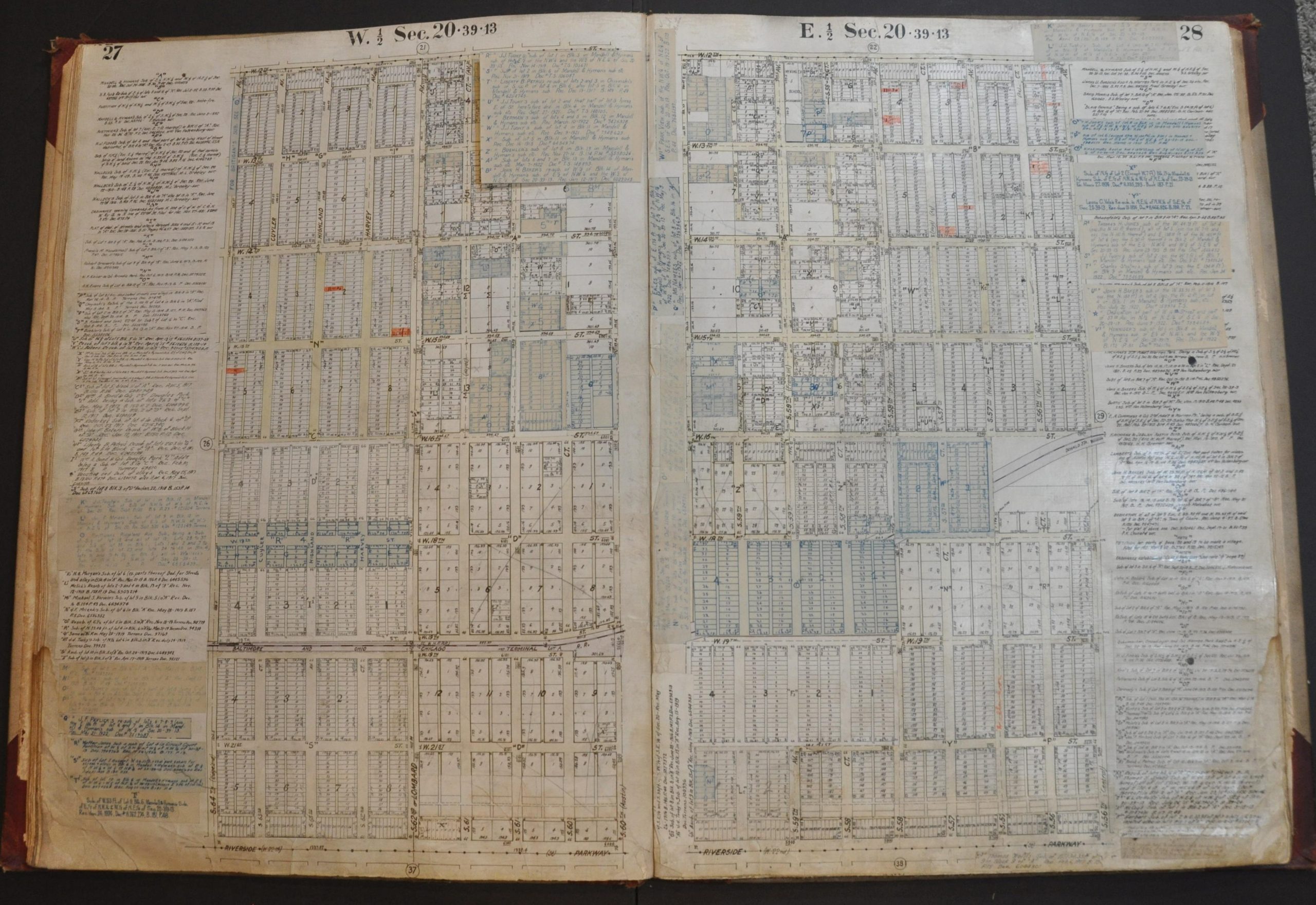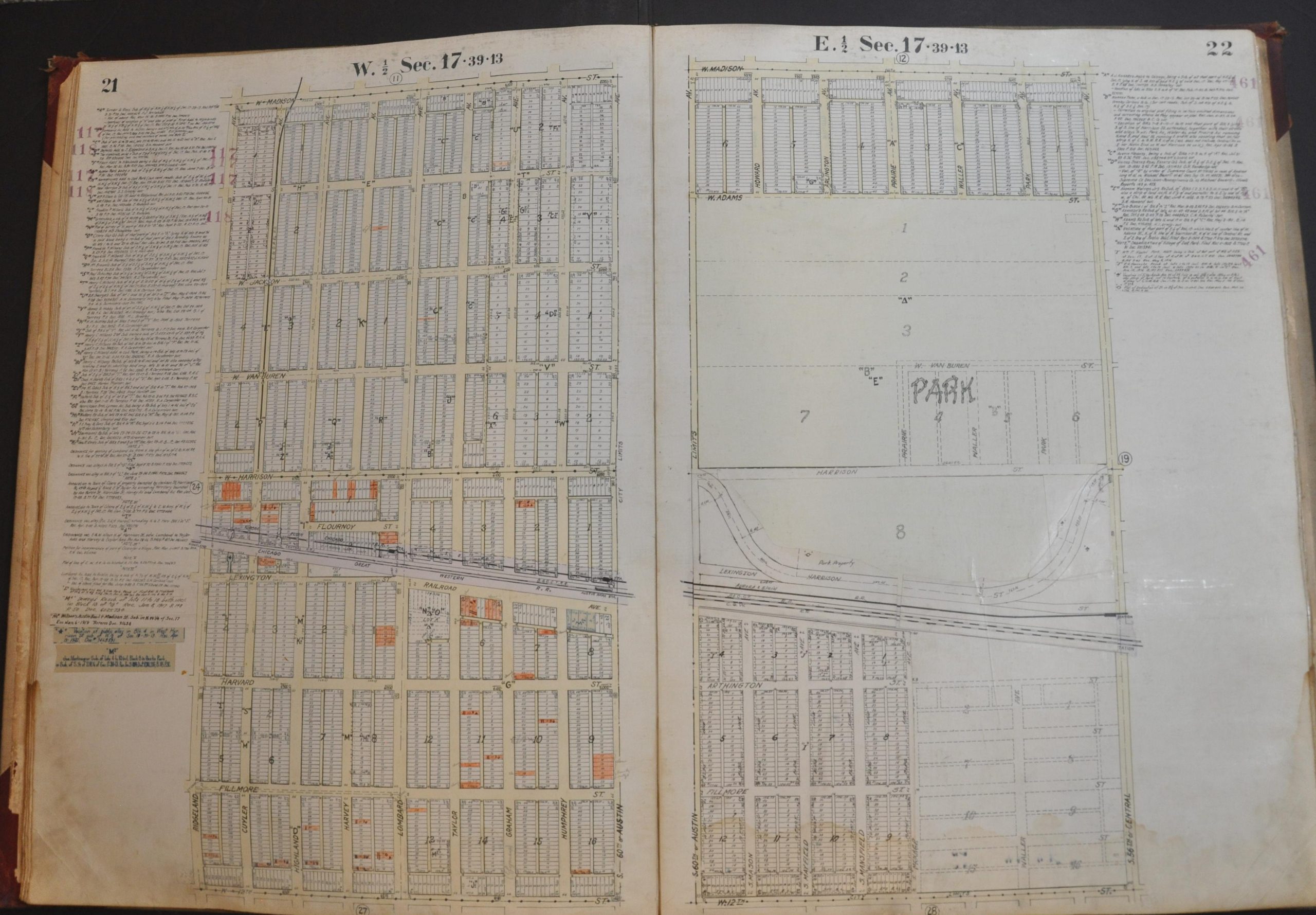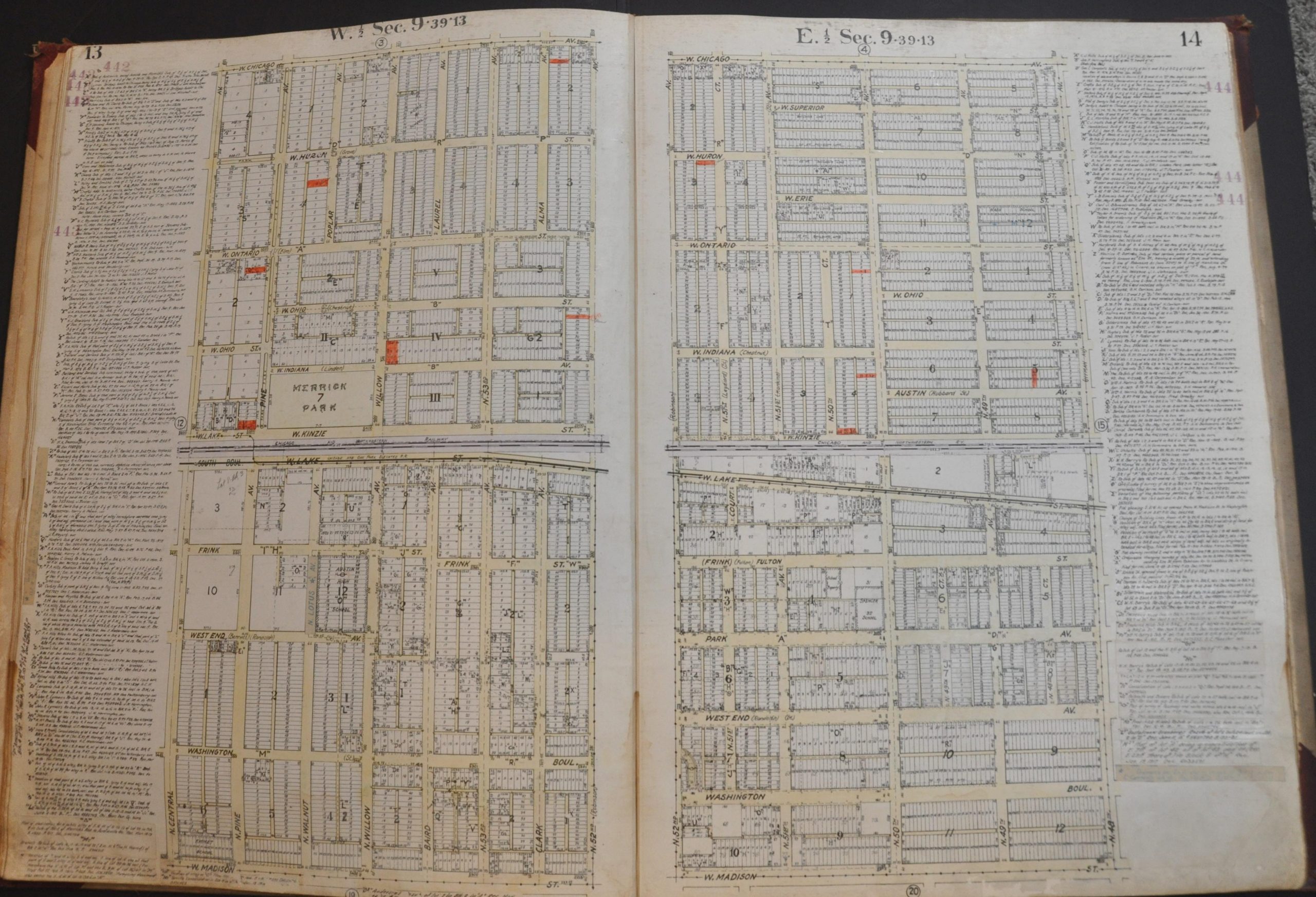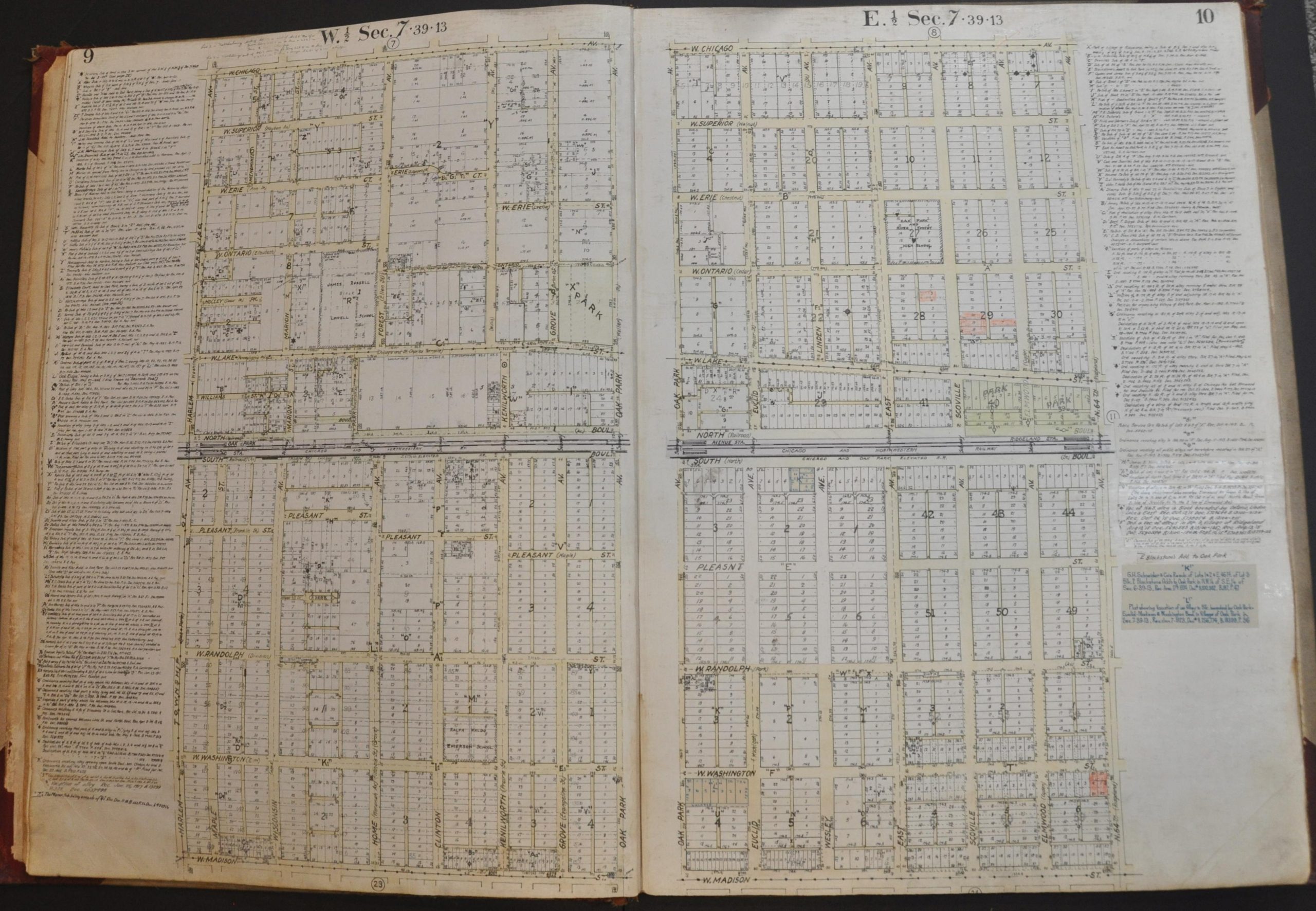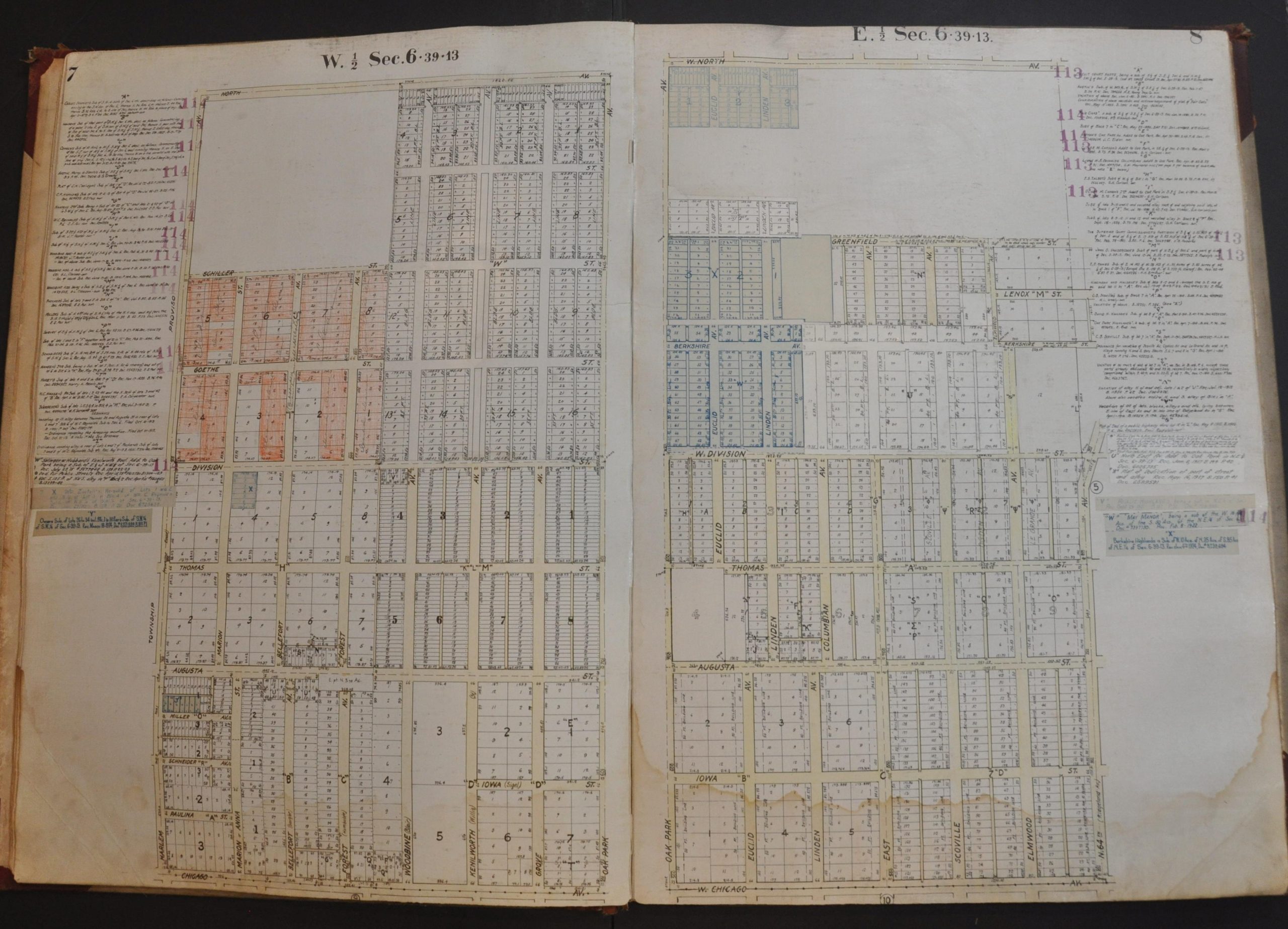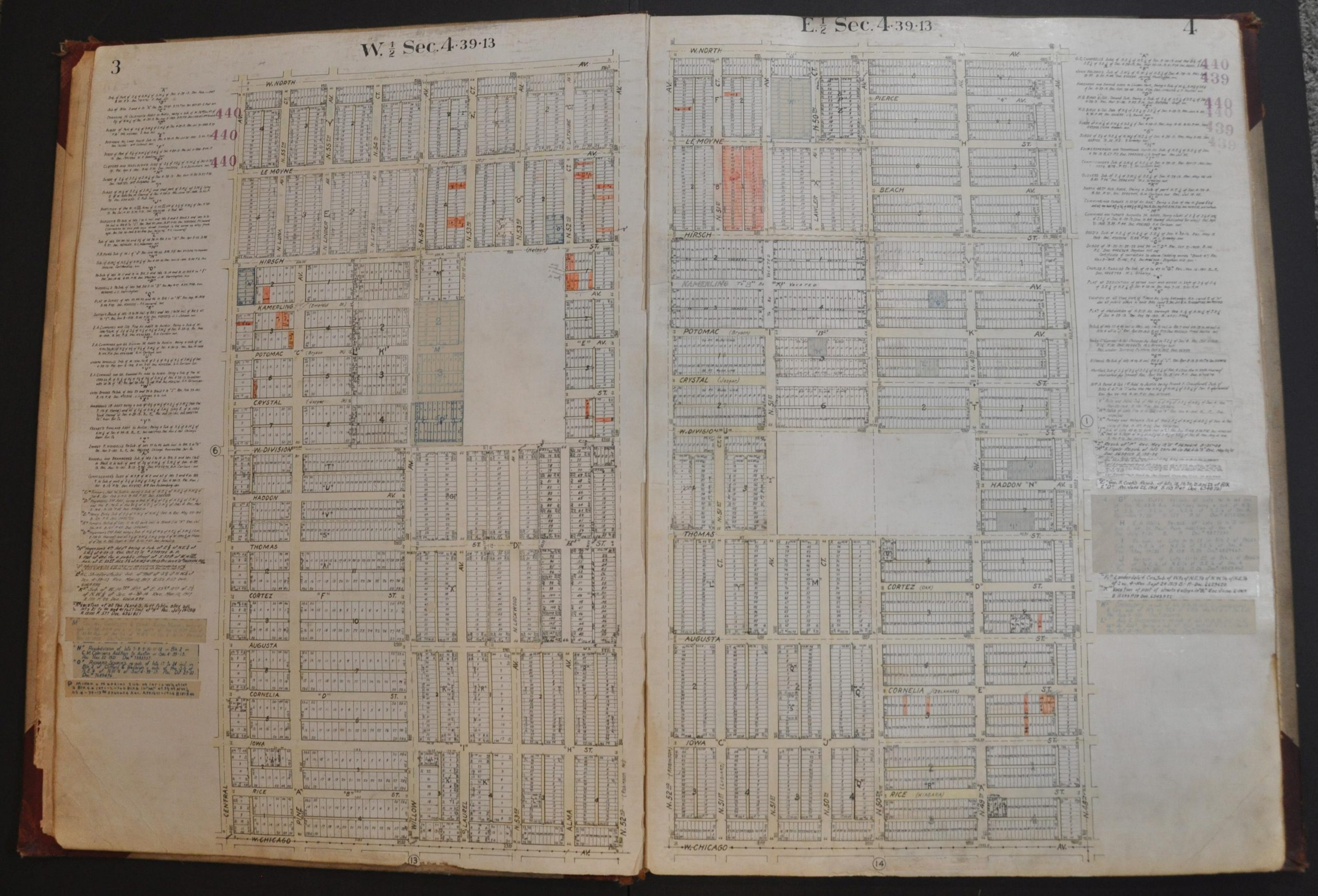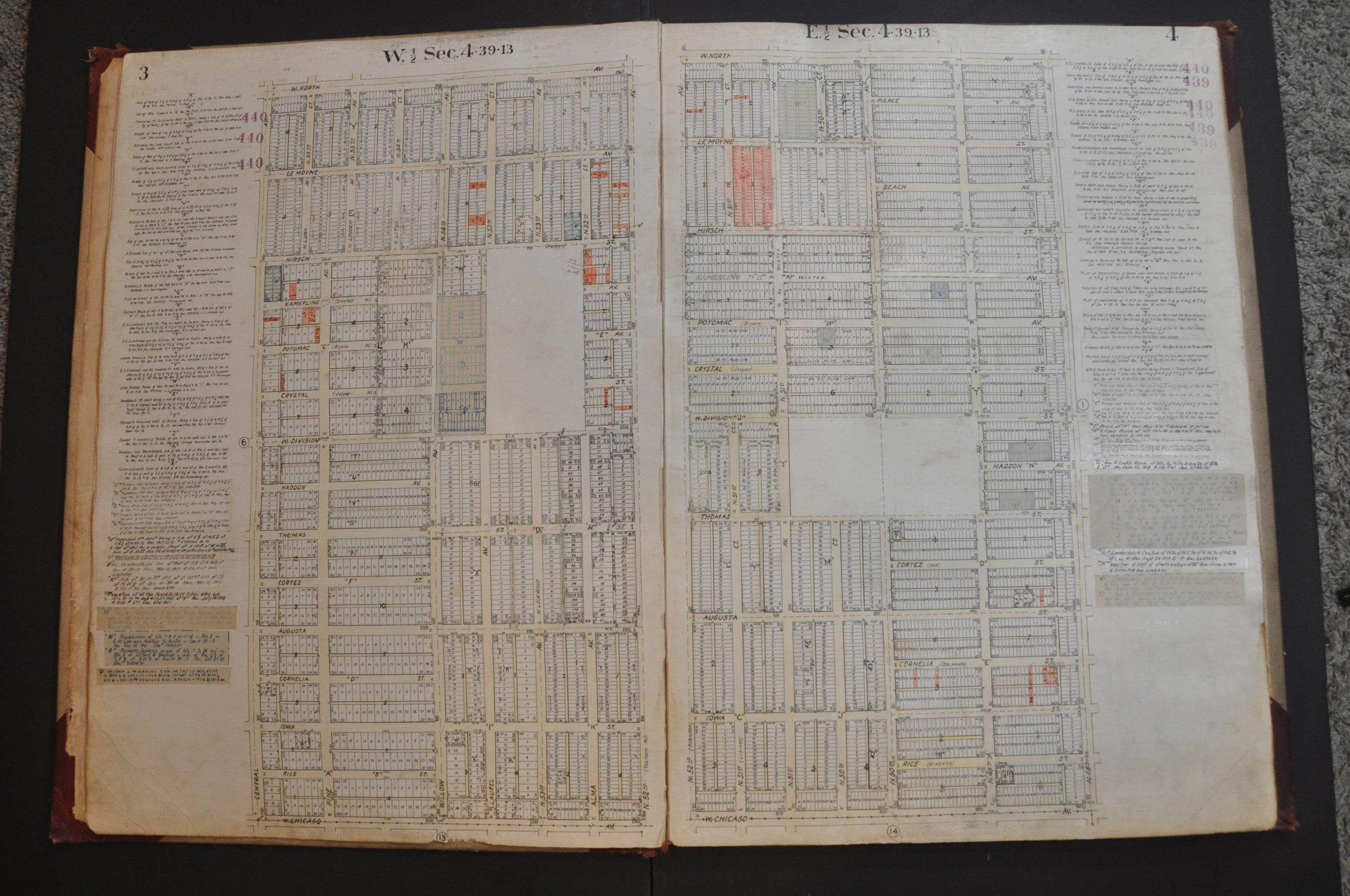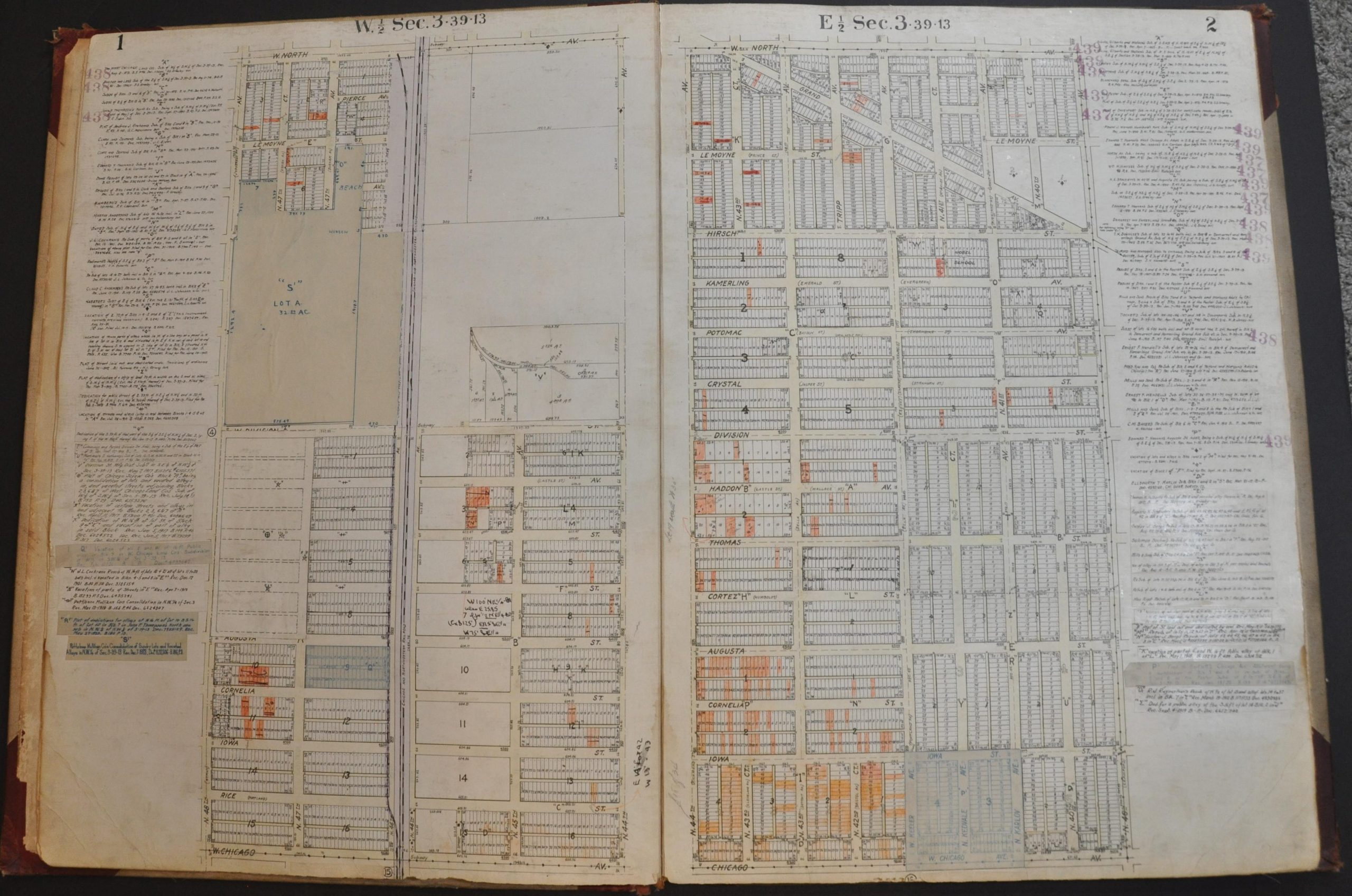Atlas of Cicero
Original price was: $2,250.00.$1,750.00Current price is: $1,750.00.
Al Capone’s stomping grounds during the Roaring ’20s!
1 in stock
Description
This spectacular relic of Chicago’s gangster era was originally published in 1913 by the Real Estate Map Publishing Company. It focuses on the township of Cicero, immediately west of Chicago’s city limits, and includes the adjoining villages of Oak Park, Berwyn, Austin, Morton Park, Hawthorne, Clyde, and Ridgeland. The atlases’ 48 pages provide a comprehensive overview of the suburban region; identifying major infrastructure, transportation routes, lot outlines, important buildings, and house numbers.
Manuscript annotations, color highlights, and pastedowns can be seen on nearly every page – reflecting ownership changes and other transactional information of interest to a local real estate firm. The left and right margins expound on these details, offering a brief textual description of the various lots labeled throughout the image. The latest of these additions is dated 1927, though the majority of them took place during the 1910s and early 1920s.
The contents show a region experiencing significant development; fueled by proximity to growing industry, excellent rail connections, access to the Chicago Sanitary and Ship Canal, and an influx of working-class homeowners, with particularly large groups of Czechs and Poles. The huge shop grounds of the Chicago & Northwestern Railway Company occupy much of pages 15 and 16, while the Western Electric Company’s iconic Hawthorne Works can be seen on page 33. Ogden Avenue, eventually better known as Route 66, bisects the area as it connects Chicago to the west.
Despite the positive trends reflected in these updates, there was also a significant criminal element during the atlas’s lifetime. In 1923, Al Capone’s operations were forced out of Chicago after the city elected mayor Michael Dever, less amenable to the illicit activities than “Big Bill” Thompson. The following year, Capone moved into Cicero, using terror and violence to influence local elections. He headquartered his operations at the Hawthorne Inn at 4833 W. 22nd St (pg. 36) and ran the famous Cotton Club down the street at 5342 W. 22nd (pg. 29). It was here that jazz greats like Jelly Roll Morton, Duke Ellington, and Louis Armstrong could be heard while the audience enjoyed bootlegged alcohol. Apparently, the threat of danger was so great that a previous owner wrote ‘Be Careful’ near several lots on page 32!
This incredible atlas is a rare piece of Chicago’s history, with only two known examples located at the Library of Congress and the Chicago Public Library. Even so, the updates and paste-downs make this a unique example.
Sources: WBEZ; Chicago Crime Scenes; WorldCat; Chicago Tribune;
Map Details
Publication Date: 1913
Author: A.C. Ebbeson
Sheet Width (in): 29.25
Sheet Height (in): 22
Condition: B+
Condition Description: i - iv + 48 pp. real estate atlas originally printed in 1913, but with additional updates, paste-downs, and manuscript annotations reflecting modifications into 1927. Bound in original half red leather with brown cloth sides. Boards are worn with scuffed corners, with old coffee rings on the front cover. The spines have old reinforcements and the contents are quite tight. Some wear on the title page and index sheet. Dampstaining affects the lower left corner and bottom margin for several pages, though none are as affected as the title page (see photos). Blueprint scraps adhered to the front endpaper and numerous other signs of wear associated with age. Remains in good condition overall for such a well-used volume.
Original price was: $2,250.00.$1,750.00Current price is: $1,750.00.
1 in stock


